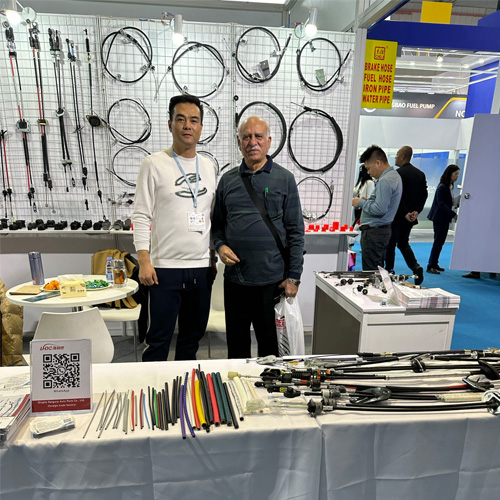car throttle cable
Understanding Car Throttle Cables Function and Importance
The throttle cable plays a crucial role in the operation of internal combustion engines, serving as the connection between the accelerator pedal and the engine's throttle body. This seemingly simple component allows the driver to control the amount of air-fuel mixture entering the engine, directly influencing the vehicle's speed and acceleration.
Understanding Car Throttle Cables Function and Importance
The mechanical design of the throttle cable system is critical for ensuring smooth operation. In older vehicles, a traditional cable setup was prevalent, providing a direct link between the pedal and the throttle. However, in modern cars, especially those equipped with electronic throttle control (ETC) systems, this setup has evolved. Instead of a physical cable, electronic sensors detect pedal position and send signals to the engine control unit (ECU), which then adjusts the throttle position electronically. This transition results in advantages such as improved fuel efficiency, reduced emissions, and enhanced responsiveness.
car throttle cable

Despite advancements in technology, traditional throttle cables are still widely used in many vehicles. Maintenance of these cables is essential for optimal performance. Over time, cables can stretch, fray, or become corroded, leading to diminished responsiveness or even failure. Regular inspections and proper lubrication can prolong the life of the throttle cable, ensuring that the vehicle runs smoothly.
Additionally, understanding the throttle cable's functionality aids drivers in troubleshooting. If a driver experiences unusual acceleration behavior, such as hesitation or sudden spikes in speed, it might indicate a problem with the throttle cable or its linkages. Recognizing these symptoms can prompt timely repairs and enhance safety on the road.
In conclusion, the throttle cable, whether in a traditional mechanical system or an advanced electronic setup, is integral to vehicle performance. Its primary function is to regulate engine power based on driver input, making it crucial for a safe and responsive driving experience. Regular maintenance and awareness of its condition can significantly impact a vehicle's performance and longevity.
-
Workings of Clutch Pipe and Hose SystemsNewsJun.04,2025
-
The Inner Workings of Hand Brake Cable SystemsNewsJun.04,2025
-
The Secrets of Throttle and Accelerator CablesNewsJun.04,2025
-
The Hidden Lifeline of Your Transmission Gear Shift CablesNewsJun.04,2025
-
Demystifying Gear Cables and Shift LinkagesNewsJun.04,2025
-
Decoding Clutch Line Systems A Comprehensive GuideNewsJun.04,2025
